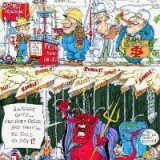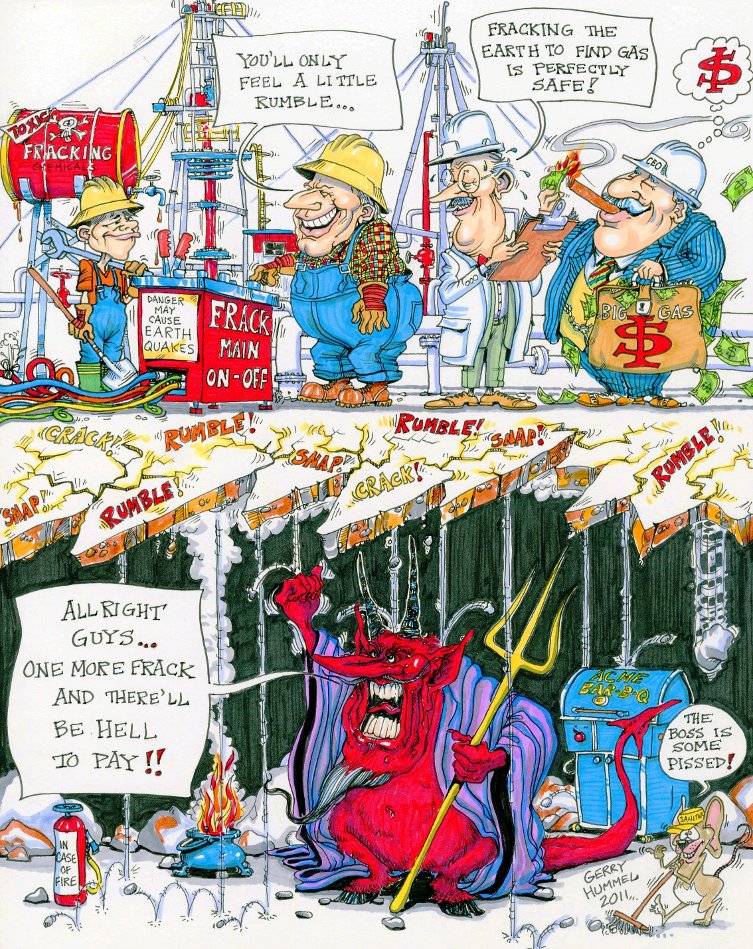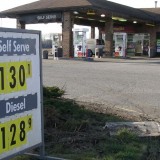From the Vancouver Sun – March 14, 2011
by Gordon Hamilton
METRO VANCOUVER – Locked within the shale deposits of northeastern
British Columbia lies a natural gas reserve of unparalleled wealth that
could push the province into a resource boom unrivalled since the
development 50 years ago of the pulp-and-paper industry.
This
resource is nothing more than individual, tiny bubbles of hydrocarbon,
all that remains of a single organism that lived and died in a
primordial sea and was buried in the mud millions of years ago.
But
the accumulation of billions of such organisms over time adds up to gas
deposits of 250 trillion cubic feet to 1,000 trillion cubic feet,
according to the provincial energy ministry.
How much of that is
recoverable is a work in progress as companies drill into it. But even
at today’s low price for natural gas of $3 per 1,000 cubic feet at the
wellhead, those reservoirs could have a value beginning at $750 billion.
And the more companies drill, the more gas they find.
“We
haven’t finalized booking the reserves in the shale gas plays,” said
Ken Paulson, chief engineer and deputy commissioner at the B.C. Oil and
Gas Commission. “We are still getting information from some of the plays
which allows us to refine our estimates as to how much hydrocarbon is
actually in these reservoirs. But it’s a lot.”
Energy Minister Steve Thomson said shale gas is becoming mainstream development for the petroleum industry in B.C.
“The
magnitude and nature of B.C.’s shale gas resources creates
opportunities for long-term development planning by both industry and
government,” he said in an email to The Sun.
Northeastern B.C.
contains four major gas formations: The Montney basin near Dawson Creek,
the Horn River and Liard basins northwest of Fort Nelson, and the
Cordova Embayment, east of Fort Nelson. But the promise of wealth that
they offer is tempered by several facts: They are far from North
American markets for gas; they are more costly to get out of the ground
than conventional reserves; and the way the gas is being extracted is
drawing growing public concern.
The shale gas deposits have
triggered a slew of deals worth billions of dollars as global companies
jockey to gain a foothold in this new resource gold rush. Petro China’s
$5.4-billion investment with Encana, for a 50-per-cent stake in one B.C.
gas deposit alone, is the largest, while South African synthetic fuel
producer Sasol’s $2-billion investment in two of Talisman Energy’s gas
holdings perhaps brings the most promise.
Sasol is a world-leader
in technology of converting natural gas to synthetic diesel, and it has
agreed with Talisman to conduct a feasibility study around the economic
viability of a facility in Western Canada to convert natural gas to
liquid fuels.
“It’s exciting, innovative stuff,” said Travis Davies of the Canadian Association of Petroleum Producers.
Development
of the shale gas deposits brings with it a whole new way of looking at
the province’s resource wealth. But it also brings questions on how the
gas is being extracted and whether it will trigger a round of
value-added investment similar to the sprouting of pulp and paper mills
that came when new provincial forest tenures and policies spurred
logging in Interior forests in the 1960s.
Or, will the gas simply be exported as a raw commodity, the equivalent of exporting logs?
The
province has three options: Tap into new offshore markets where gas
prices are higher, add value by converting it to liquid fuels, or use it
to generate electricity.
“We need to find new markets. There are a
number of projects on the books right now … such as a liquefaction
plant and possible export terminal in the Kitimat area. These projects
have big implications for markets for gas, not just for B.C. gas but
North American gas, ” said Paulson.
The potential for a
petrochemical plant converting gas to liquid fuel in the province’s
northeast is particularly tantalizing, but B.C. has no policy framework
to encourage a petrochemical plant here. It could be built in Alberta.
The
third alternative, using gas to generate electrical energy, is far from
being a perfect solution. It’s cleaner than coal, but is still a fossil
fuel releasing greenhouse gases, even if only half those of coal. But
when the price of gas rises above the equivalent price of coal, power
producers can switch back to burning coal.
To access B.C. shale
gas, companies use a technique called hydro-fracturing, or fracking, to
release the trapped bubbles, which can be in shale deposits one to two
kilometres below the surface. The technique involves drilling a vertical
well about 18 centimetres wide until it reaches the shale layer. The
drill bore then is gradually curved to horizontal, where it can go for
another two kilometres through the shale.
Water, sand and a lubricating solution are then pumped at high pressure into the well.
The
water pressure fractures the shale into tiny pieces, creating millions
of surfaces, which release their gas. The sand keeps the pieces apart
and the gas within the shale is then forced to the well by the pressure
of the rock above.
But fracking is raising concerns over the
chemicals being used and the wisdom of fracturing part of the earth’s
crust. (Some are blaming it for a series of mini-earthquakes in
Arkansas, a region that is generally quake-free.)
Further, environmentalists fears of contamination of the aquifer if gases or chemicals escape.
Last
week, the province of Quebec placed a two-year moratorium on fracking
in shale gas deposits in that province while it develops regulations.
Energy minister Thomson said the situation in Quebec is far different than here.
“This
is a province where oil and gas exploration has been taking place for
decades. Quebec, on the other hand, is only beginning to establish an
oil and gas sector,” he said in the email. “It makes sense for Quebec to
take a prudent approach as they do not have the background and
regulatory structure in place like we do.”
Paulson said the province has kept abreast of technological change by expanding its regulatory regime to include fracking.
The
Oil and Gas Activities Act, which came into effect last October,
contains regulations that specifically address drilling of shale gas
wells and hydro-fracturing, Paulson said. Water stewardship is addressed
in regulations and companies are required to dispose of chemicals
safely.
Companies keep their chemical solutions secret, saying
they are proprietary. It amounts to less than one per cent of what is
injected, according to the Canadian Association of Petroleum Producers.
The
commission does not require them to divulge their chemical mix, but
they must keep on-site a list of the chemicals they use in fracking. If
for example, cross-contamination by one fracture full of fluid extended
into an adjacent fracture created by another well, then the commission
would want to know what exactly is in the solution.
That has never happened, Paulson said.
Read original article



